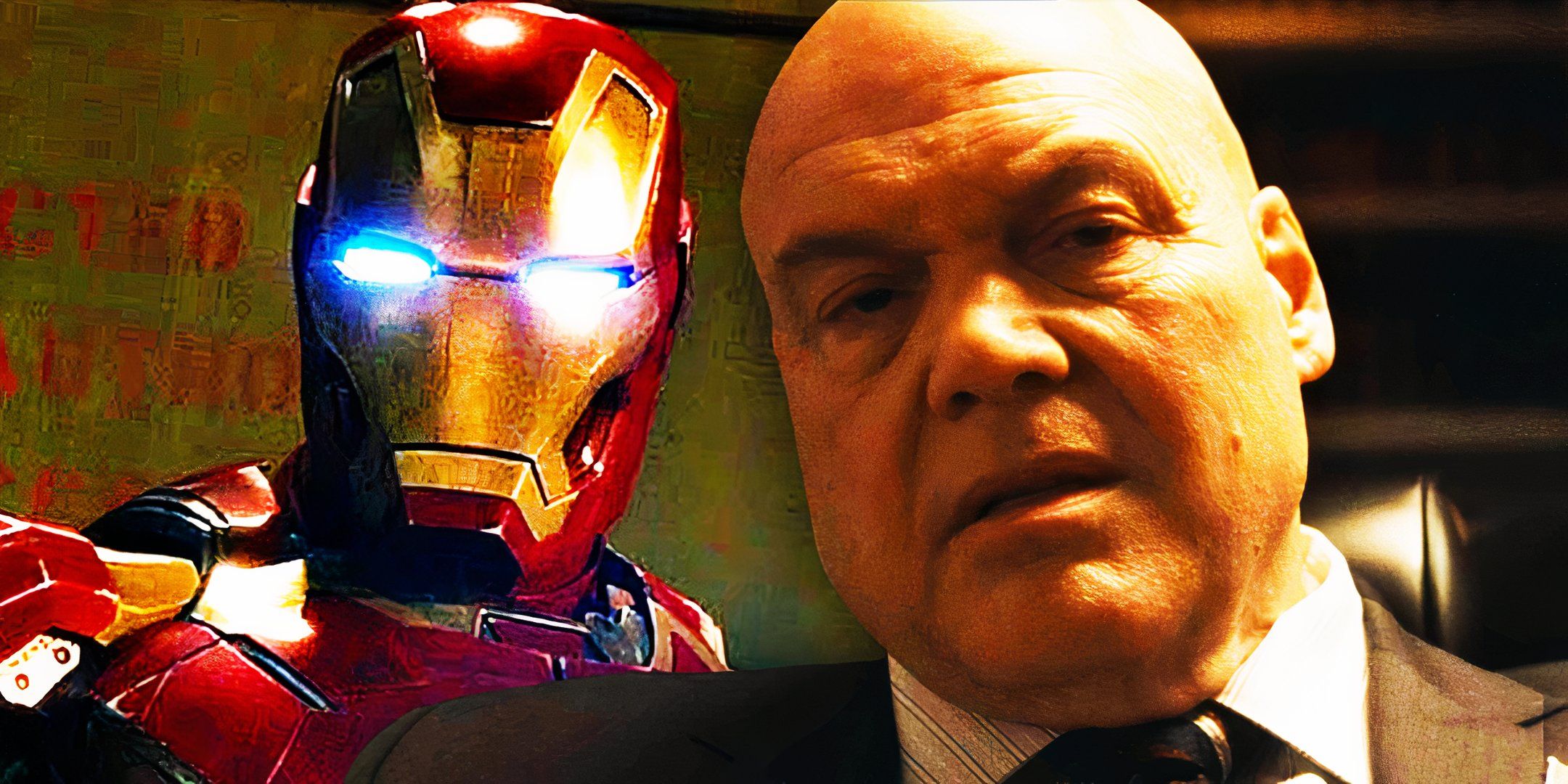The MCU's Time Variance Authority Were Designed as a Satire of Marvel, Creator Confirms
Summary Walt Simonson's creation of the Time Variance Authority was originally designed as a satirical jab at Marvel's increasingly corporate environment in the late 1980s.
The iconic TVA character Mobius M. Mobius was visually based on late Marvel writer and editor Marc Gruenwald, something Simonson paid tribute to with a recent Instagram post.
Simonson's original concept of the TVA has been adapted into the MCU's Loki series in a significantly altered context, while in some latent sense still maintaining a hint of the satirical intent behind the organization.
Long before Loki made them integral to the MCU, the Time Variance Authority were introduced as a satirical jab at Marvel itself. Creator Walt Simonson confirmed this in a post online, in which he paid a tribute to late writer and editor Marc Gruenwald, who served as the visual basis for Mobius M. Mobius' character design.
On Instagram, Simonson posted an old photograph of Gruenwald, along with a caption explaining how his colleague ended up on the page as Mobius. Gruenwald passed away tragically in 1996; nearly thirty years later, his legacy continues to be preserved by Marvel, and by former coworkers like Walt Simonson.
A legendary name in the industry himself, Simonson noted that his original intention for the Time Variance Authority was corporate satire, making fun of the changing atmosphere at Marvel during the late 1980s and early 1990s.
Related 1 X-Men Hero TERRIFIES the MCU's Time Variance Authority The Time Variance Authority were a formidable force in the MCU's Loki series, but one member of the X-Men strikes fear into their hearts.
Walter Simoson Poked Fun At His Own Publisher With The Original "TVA"
And Immortalized Colleague Marc Gruenwald
The satirical origin of the Time Variance Authority was...an in-joke at [Walt Simonson's] own company's expense – but in retrospect, it contains great insight into the trajectory of the comic book industry over the last several decades.
The original incarnation of the TVA played a relatively minor role in the Marvel Universe, but the story of its initial development offers insight into the evolution of Marvel Comics over the years. As Walt Simonson explained, the concept was a response to what it was like working at Marvel as the company began to experience a culture shift. Simonson noted:
I originally created the TVA (the Time Variance Authority) as something of a satire of Marvel Comics, which was becoming more corporate at that time. Part of the story structure was that we never saw any top level executives. The employers I showed - the Time Monitors - were faceless.
After a brief introduction 1986's The Mighty Thor #372, this depiction of the TVA was elaborated on in several early 1990s Fantastic Four stories, along with the human face on the organization: Mobius M. Mobius.
As Simonson's editor on Thor, Gruenwald was receptive to the joke at their employer's expense; more than just "getting" it, and allowing it to make it into the final version of the story, Gruenwald posed for photos, which Simonson in turn used as a reference in the creation of Mobius. A Gruenwald-esque character is seated in front of a monitor depicting a cameo appearance from the Hulk in Mighty Thor #372, though he would later make his first full appearance in The Fantastic Four.
The satirical origin of the Time Variance Authority was, as Walt Simonson describes it, an in-joke at his own company's expense – but in retrospect, it contains great insight into the trajectory of the comic book industry over the last several decades. Not only did Simonson recognize the corporate future of Marvel, he also unwittingly tapped into future generations' obsession with continuity. It was this latter, unintentional meaning that would, decades later, give rise to the Marvel Cinematic Universe incarnation of the organization.
Simonson's "Time Monitors" Were A Dig At Marvel's Corporatization
Effective, If Subtle Satire
Close
With the Time Monitors, Walt Simonson offered recognition that many of the things which made working in the comic industry unique would eventually be challenged by an increasingly corporatized environment.
In their most iconic pre-MCU appearance, from Fantastic Four Annual #24, the TVA's Time Monitors are depicted as faceless – though notably not without personality – suit-wearing office workers, in the most direct articulation of Simonson's original concept. Interestingly, Wal Simonson was not the author on the issue; given the collaborative nature of Marvel's editorial process during that era, however, it can be assumed he had direct involvement in the story's development. In any case, this was also the story in which Mobius' visual connection to Mark Gruenwald was also truly emphasized for the first time.
Fantastic Four Annual #24 (1991) Writer: Al Milgrom
Artist: Al Milgrom
Colorist: Renée Witterstaetter
Letterer: Jim Novak
Cover Artist: Al Milgrom
Audiences are trained to identify satire that is brash, biting, and confrontational, but it just as often comes in more subtle forms. It is not always a bold indictment of something the writer is against; in many cases, satire functions as a sly "if you know, you know" signal from an author to a certain subset of readers. With the Time Monitors, Walt Simonson offered recognition that many of the things which made working in the comic industry unique would eventually be challenged by an increasingly corporatized environment.
The extent to which that has come to pass is a matter for those in the industry to articulate further – whether openly, in interviews, or distilled onto the page in some aspect of their latest story. Marvel has, of course, grown into a substantially bigger corporation, as Walt Simonson poked fun at as far back as 1986; ironically, the success of the company's film and TV adaptations led to the relatively obscure TVA being recontextualized, on screen, as one of the most essential aspects of MCU lore.
Loki's TVA Is A Natural Progression Of Simonson's Original Concept
With Hints Of His Satirical Intent
Close
Though he didn't do much with them on the page, the TVA have proven to be among [Walt Simonson's] most lasting impacts at Marvel.
The Time Variance Authority introduced in Loki may have diverged from the original's visual aesthetic – a necessity of adapting them to a live-action medium – but its core concept remains largely the same as when it was initially introduced. Refined, perhaps, for the particularities of the MCU, and for contemporary sensibilities about continuity, but essentially, their function in the Multiverse as established by Walt Simonson was adapted intact. As with many of the MCU's best aspects, it is as if the TVA's creator left it waiting there knowing the concept would be fully articulated in the future.
What connects the original TVA – and the original intent behind them – to the MCU version is the tone with which Loki treated the organization. Of course, viewers will know that their seemingly benevolent mission statement actually belied a more nefarious purpose, and in this way, the satirical nature of the Time Variance Authority at the time of its introduction is at least reflected, at least not outright preserved. While the show does not overtly connect the TVA back to Marvel, or Disney, those comparisons may be on the minds of some fans.
Walt Simonson has had a long, legendary career in comics – and though he didn't do much with them on the page, the TVA have proven to be among his most lasting impacts at Marvel. Both for how he preserved the late Mark Gruenwald's legacy in the form of Mobius, and for his contribution to the Marvel Cinematic Universe. For an idea that began as a satire of Marvel, it has come to be one of their most relevant pieces of on-screen lore. While future seasons of Loki may be uncertain, the TVA will likely remain a fixture of the MCU for some time to come.
Source: Instagram, Walt Simonson











COMMENTS